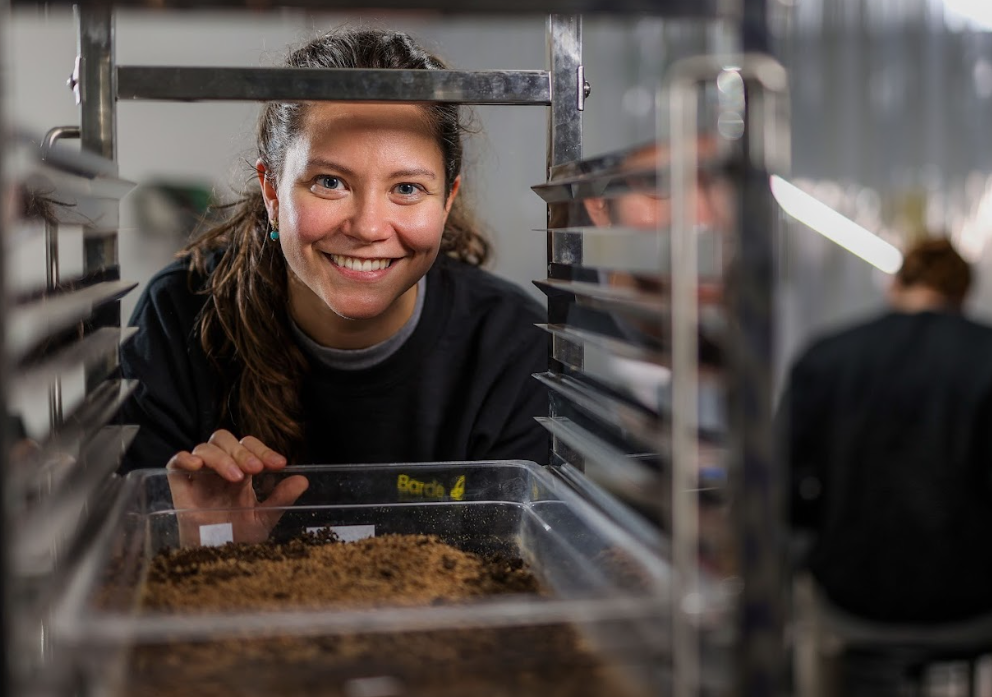Food Waste Recycling

Food waste recycling is the process of converting food waste into a useful product or resource – when it cannot be rescued for human or animal consumption – rather than disposing of it in a landfill where it contributes to greenhouse gas emissions.
There are several methods of food waste recycling, including composting, anaerobic digestion, and conversion to biofuels.
Biofuels
The most common type of biofuel produced from food waste is ethanol, which is used as a fuel additive to gasoline or as a standalone fuel in flex-fuel vehicles. Ethanol is typically produced through a process of fermentation, in which microorganisms break down and convert the food waste to produce ethanol.
Another type of biofuel that can be produced from food waste is biogasoline, which is similar to conventional gasoline.
Food waste can also be used to produce biodiesel, which is a renewable fuel made from vegetable oils or animal fats. While food waste is not typically used as a primary feedstock for biodiesel production, it can be a valuable co-feedstock that can help increase the overall efficiency and sustainability of the biodiesel production process.
Biogas
Food waste can be transformed into biogas through a process called anaerobic digestion.
In this process, the food waste is fed into an anaerobic digester, a sealed container where microorganisms break down the material in the absence of oxygen.
The process produces biogas, a mixture of methane and carbon dioxide that can be captured and used as an renewable energy source.
Biogas can be used in a variety of ways. It can be burned in a generator to produce electricity and heat, which can be used to power and heat homes and businesses.
Biogas can also be upgraded and compressed to produce renewable natural gas, which can be used as a transportation fuel for vehicles such as buses and trucks.
Bioplastics
Food waste can be upcycled into various types of bioplastics, including:
Polyhydroxyalkanoates (PHAs): These bioplastics are produced by bacteria that convert food waste into a polymer.
Polylactic acid (PLA): PLA is a biodegradable polymer that can be made from food waste such as corn starch, sugarcane, and potato waste.
Cellulose-based bioplastics: These bioplastics are made from plant-based materials, including food waste such as fruit and vegetable peels.
Starch-based bioplastics: These bioplastics are made from food waste such as potato peelings and corn starch.
Overall, upcycling food waste into bioplastics is a promising way to reduce waste and create sustainable materials that have a lower impact on the environment than traditional plastics.

Composting
Composting can turn food waste into nutrient-rich soil that can be used to grow food and plants.
Composting can turn food waste into nutrient-rich soil that can be used to grow food and plants.
Composting also reduces the need for synthetic fertilizers, which are energy-intensive to produce and can contribute to greenhouse gas emissions.
Industrial composting methods include: windrow composting, in-vessel composting and static pile composting. All these methods ensure food waste is broken down aerobically. It is often mixed with garden organics and usually requires a licensed facility to operate.
Home composting methods include backyard composting, worm composting (vermicomposting) and bokashi composting.
Insect Protein
Insect protein is an emerging food waste solution that involves using insects to convert food waste into a high-protein feed for pets, other animals and humans.
Insects such as black soldier flies, mealworms, and crickets are highly efficient at converting food waste into protein and can be raised on a variety of organic materials, including food waste, agricultural byproducts, and brewery waste.

Source: Bardee
Vermicomposting (worms)
Vermicomposting is a food waste composting method that involves using worms to convert food waste into nutrient-rich compost.
The worms consume the organic material composed of food waste and shredded paper or leaves and produce castings, a type of nutrient-rich compost, as a byproduct.
Vermicomposting offers several benefits as a food waste solution:
- It provides a sustainable way to manage food waste by diverting it from landfills and turning it into a valuable product
- It produces high-quality compost that can be used to improve soil health and fertility, reducing the need for synthetic fertilizers.
- It can be done on a small scale, making it accessible to individuals and households.
Take Action
Find out more about Food Waste Climateers by browsing this site’s menu.
Then head over to our main Climateers launch site to find out how Food Waste fits within our growing network of hundreds of Climate Solutions.
You can then Join Free today and become a founding member.
We have position vacancies for volunteers and for staff to help grow our network of local Food Waste ecosystems that are collaborating to end Food Waste.
Join FREE today and become a
Founding Member at Climateers.com
Food Waste Climateers is part of the wider global network of Climate Solutions Ecosystems.
By joining our mailing list for free today you can become one of the 10,000 Founding members at Climateers.
You’ll receive lifetime Founding Member benefits including bragging rights of helping to create the Social Tipping Point to help rewrite the end of the Climate Crisis story.
